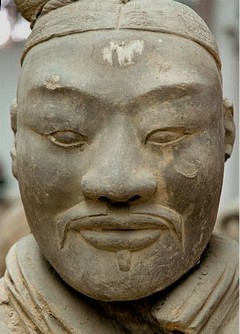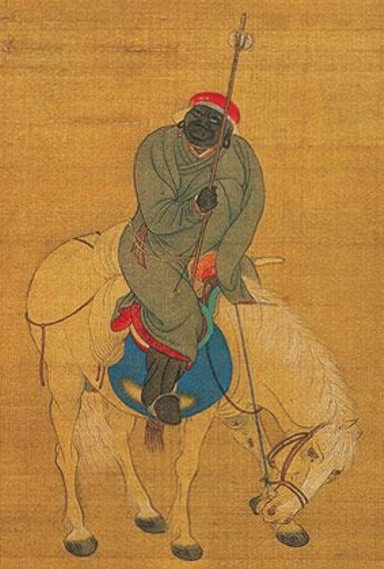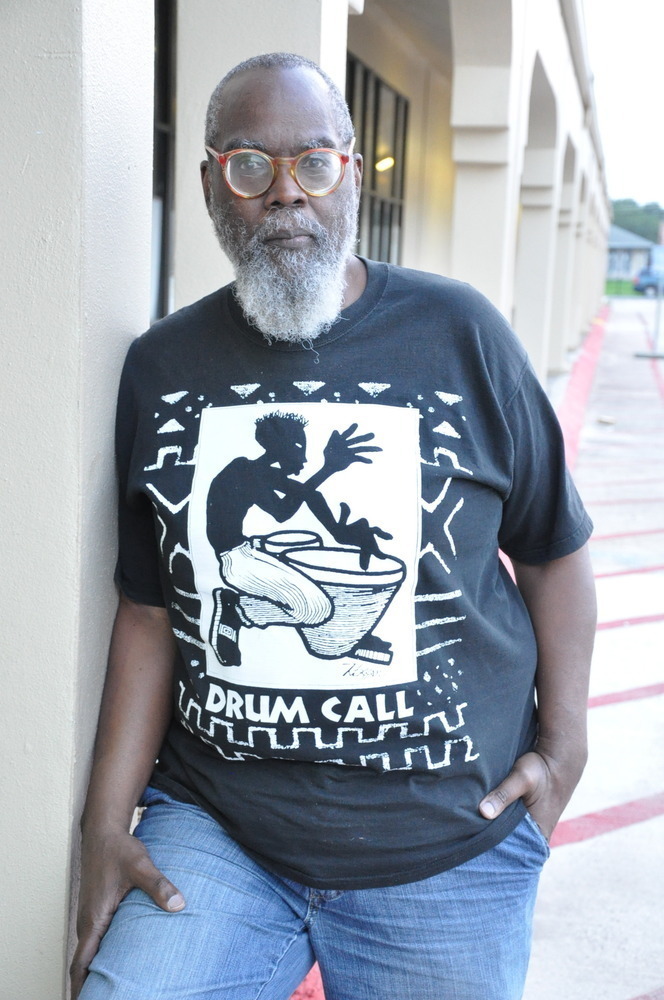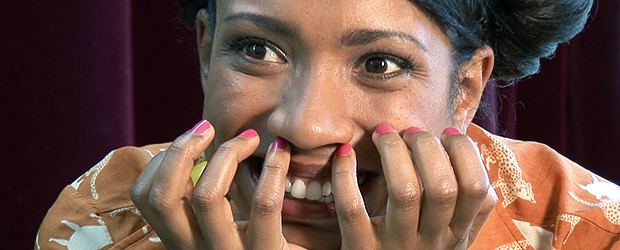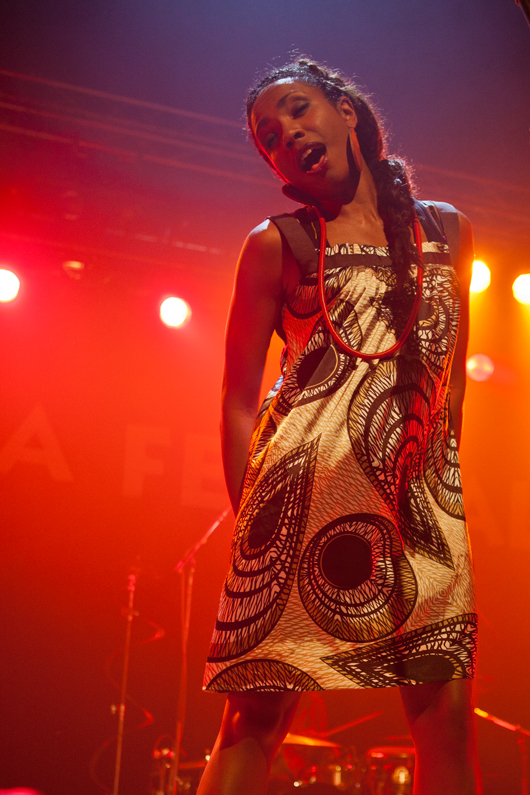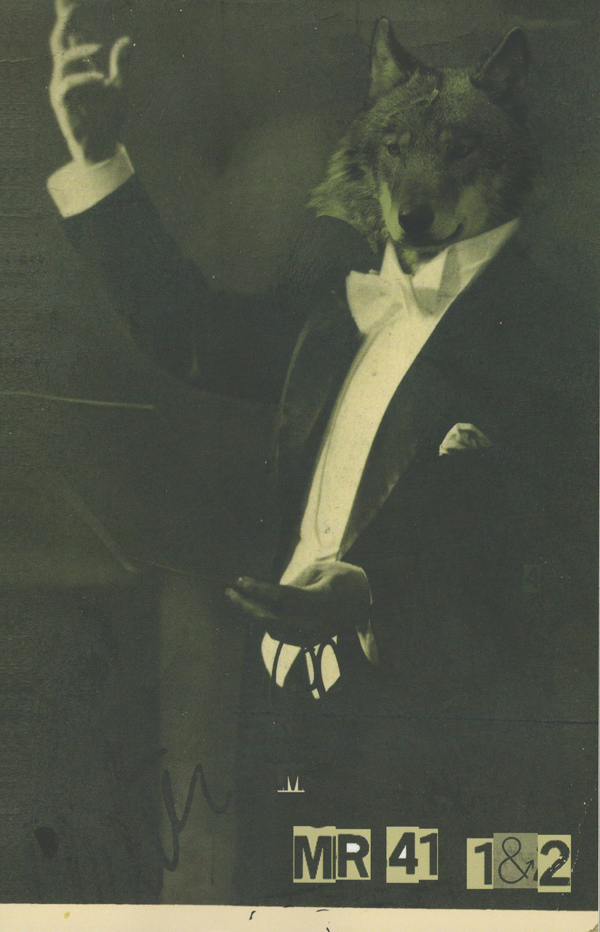West Virginia’s Bluefield State University is overwhelmingly white, but gets a big chunk of its budget from funds reserved for historically Black institutions. Whites dominate both the faculty and student body, yet “every single member of the alumni association is black.”
by Shereen Marisol Meraji and Gene Demby
This article originally appeared on National Public Radio’s Code Switch blog.
“Its HBCU designation means that Bluefield State receives millions in federal dollars each year, about a 10th of its total $20 million budget.”
It opened in the late 19th century as the Bluefield Colored Institute, created to educate the children of black coal miners in segregated West Virginia. Although it still receives the federal funding that comes with its designation as a historically black institution, today Bluefield State College is 90 percent white. The road that separates those realities is as rocky as any story of racial transition in post-World War II America.
We went to the campus of Bluefield State to see what campus life was like at this unusual college.
The very first student we met, Antonio Bolden, or Tony as he introduced himself, looked like any other student you might see at a historically black college or university (HBCU). He’s a laid-back 19-year-old, stocky with shoulder-length dreadlocks and green eyes. But at Bluefield State, Tony is an outlier for several reasons. He’s a teenager; the average age of his classmates is 27. He started college right after high school; many of his classmates are working full-time jobs, raising children, or both. And of course, he’s black, whereas the student body is only historically so.
Tony came to Bluefield State to play baseball, hoping to win the starting spot on third base. But he was surprised by what he found when he got to campus. “My first thought was: There are a lot of white people,” he said.
“Where all the black people at?”
Where The Black People Went
The story of Bluefield State’s racial transformation is wrapped up in many of the big political and economic upheavals of the late 20th century, although you might not guess it from the serene setting.
The college is tucked into the side of a hill, and folks at the school joke about having to climb up and down the campus. A lot of the folks we spoke to apologized for the campus’s humble surroundings, which seemed odd to us. It was gorgeous.
When we arrived, the trees in the mountains that ring the city were just starting to change color. From the stairs of Conley Hall, the building at the top of the hill, you can survey the entire campus, train tracks cutting across the valley below.
This part of West Virginia was coal country and still is — trains still haul coal along those tracks hugging the college’s southern edge. Many of the black folks who migrated to West Virginia to work that coal sent their children to the Bluefield Colored Institute. By the 1920s, the school was a football power among black colleges and a stepping stone for much of the region’s black middle class.
In 1954, just a few years after Bluefield State earned full accreditation, the Supreme Court declared segregation illegal in Brown v. Board of Education, reshaping the landscape of America’s schooling. Suddenly black students had more educational options to choose from, in theory anyway. And black colleges and universities like Bluefield State began having to compete with better-funded predominantly white schools for top black students.
At the same time, new technology was making mining jobs obsolete, and many black folks started leaving the state, heading North to go work in the factories. White veterans started coming back to West Virginia after fighting in Korea. And with the government footing their tuition costs through the G.I. Bill, the state’s inexpensive black schools — the other was West Virginia State University — started looking more and more attractive to white students.
“We had an out-migration of students of color because of Brown v. Board of Ed,” said Jim Nelson, a spokesman for the school, “at roughly the same time that we had an in-migration of largely Caucasian students wanting to use their G.I. Bill benefits. So that’s what, as much as anything, that’s what flipped the complexion of the school.”
By the mid-1960s, Bluefield State was only about half-black. But the college, founded and run by black folks to serve black students, was about to undertake a big, ugly fight over its future identity.
In 1966, the state picked Wendell G. Hardway to lead the college — the school’s first white president. Deirdre Guyton, who runs the college’s alumni affairs department, said that Hardway was the first president to live off campus rather than at Hatter Hall, the house in the center of campus named for the school’s black founder. By 1968, according to the book Bluefield State College Centennial History, Hardway had hired 23 new faculty members — all of whom were white. The book goes on to say that the college’s dedicated faculty, which had been all-black as recently as 1954, was only 30 percent black by 1967. If there was a tug of war over what the college was going to be, many of the black alumni and students felt they were losing. Bluefield State was quickly becoming unrecognizable.
“Black colleges and universities like Bluefield State began having to compete with better-funded predominantly white schools for top black students.”
That tug of war looked a lot like battles being waged across the country, like the growing divide between black folks who believed in nonviolence as an avenue to black progress and those who felt that method was taking too long and yielding too little. During halftime at homecoming in 1967, black students staged a demonstration on the football field to protest what they saw as Hardway’s discrimination against black faculty and students. Things got rowdy. The police were called. Students were suspended.
Things got rowdier. In 1968, the year that Martin Luther King and Robert Kennedy were killed, tensions on the campus were boiling over. Administrators started receiving death threats. Students met with Hardway in a dorm, but that, too, went sour. Edgar James, a black student and Army vet, tried to hand Hardway a list of 35 demands, one of which called for his resignation. That didn’t go over well.
A group of the more radical black students, including James, held a meeting in November in the student union building. They wore matchbooks with the letters “EOW” written on them. Hardway translated the reference for an AP reporter: “The rumor on campus is that it means they intend to burn down the campus by the ‘end of the week.’ “
James, speaking to the same reporter on behalf of the radical students, laid out what they saw as the stakes: “They are carrying out mental genocide here, trying for the educational extermination of the black student,” he said. “There is a systematic weeding out of the black student. This is an imperialistic and oppressive system at Bluefield.”
And then on Nov. 21, 1968, while most of the campus was away for Thanksgiving, a bomb tore through the campus gym.
Although there were several campus employees nearby, no one was injured. Newspaper accounts said that the explosion left a gaping hole in the side of the building. Court papers said that lots of people on campus knew of the plot to dynamite the gymnasium, especially students living in the dorms, which those documents describe as “virtually all black.” (“You could forget about finding an apartment if you were a black student at Bluefield State,” according to Tara Tuckwiller of the Charleston Gazette. “White landlords in the area wouldn’t exactly welcome you with open arms.”)
In response to the bombing, Hardway shut down the dorms.
Hardway said the bombing was the work of Northern agitators who lived in those dorms. James was indicted for the bombing, but the charges against him were eventually dropped. According to alumni we spoke to, however, many black students felt that it was the pretext Hardway needed to turn the school all white.
“The National Guard killed people at Kent State; they didn’t close a single dorm,” said Lois Manns, an alumna from the Class of 1969. “So why did you close dorms at Bluefield State for a bombing that didn’t injure anybody? And basically it was just a form of protest when militancy and protest was the order of the times. It was the ’60s! So I think the reaction that the Legislature and other people took shows their own racist agenda. Now that may not be a popular thing, but if somebody thinks differently, then man up. Speak it to my face.”
“Hardway said the bombing was the work of Northern agitators.”
The bombing and the closing of the dorms led to a dramatic shift in Bluefield State’s makeup. The black students who’d come to the college from far away suddenly had no place to live. And with black folks migrating away from the region, the Bluefield State campus began to look increasingly like the rest of West Virginia, one of the whitest states in the country. (West Virginia State, the state’s other black college and the second-whitest HBCU in the country, .)
In the span of about two decades, Bluefield State had gone from an all-black college to a mostly white commuter school. By 1987, according to Bluefield State College Centennial History, the dedicated faculty was 6 percent black. The school wouldn’t have another black president until 2002.
Bluefield State remains an HBCU because of a quirk of federal law: To qualify as an HBCU and receive federal funding, an institution must have served a predominantly black student population before 1964. There are several institutions today that serve a predominantly black student body, but aren’t designated or funded as “HBCUs” because they didn’t exist or weren’t predominantly black before 1964. But there’s no mechanism in federal law for removing that “historically black” designation. In other words, as Shereen puts it: Once an HBCU, always an HBCU.
But there is one group at Bluefield State College that to this day remains resolutely black.
Bluefield’s Past Meets Bluefield’s Present
Back in the day, Bluefield State’s alumni came from all over to descend on campus for homecoming. They partied and rooted for the football team as it squared off against West Virginia State, their traditional rival.
“We had football, baseball, track, tennis, the whole thing,” said alumnus Russell Manns. “We had the whole deal. You couldn’t move on this campus from Wednesday through Saturday … with people coming back to be here for all the festivities. The fraternities and sororities and things, they had things going on.”
But Bluefield State scuttled its football program in the 1970s, which meant homecoming without the big game. Nevertheless, members of the shrinking Bluefield State Alumni Association still make the sojourn back to southern West Virginia every year, football be damned.
And every single member of that alumni association is black.
In fact, there’s never been a white member, Guyton told us.
One of the few homecoming events every year is a luncheon to honor the college’s founders. This year’s honored speaker was E. Ray Williams, a black nonagenarian World War II vet who went to Bluefield State on the G.I. Bill. He was speaking to an audience made up mostly of fellow alumni.
There were about seven or so current students in attendance, mostly from the homecoming court. They were hard to miss. It was the table with the white kids.
It looked like the intervening decades since their college days at Bluefield State had treated the alumni well. Williams, the first of his family to go to college, eventually had seven children, all of whom went on to graduate college as well. Even though he was in his 90s, Williams sat on all sorts of community boards and was still active in his fraternity. And he credited Bluefield State for the big life that he’d lived. People nodded in assent.
His fellow alumni in the audience were retired principals and social workers and educators, with college-educated children and grandchildren of their own. They were people like Gloria P. Brown, whom everyone just called Go-Go.
If you’ve ever seen an Alpha Kappa Alpha sister, you’d know Go-Go was a member from across the room: She was resplendent in a pink skirt suit, heels and pearls. Her nickname isn’t a coincidence: She speaks like someone who’s been talking at the top of her lungs for most of her life, comfortably in control. She’s in her 80s and her current husband is in his 70s; Go-Go likes to joke that she’s a cougar.
“It didn’t look or feel much like a college at all.”
Go-Go graduated from Bluefield State in 1951 and moved to California to raise her family. Although she’s missed a few homecomings here and there, she makes it back almost every year. She’s a retired social worker, although she said that really just means she works for free now. There’s a brick on campus at the University of Southern California with her name on it, a symbol of her monetary contributions to the school where she received her graduate degree. But she said she doesn’t allocate the energy to the deep-pocketed U.S.C. that she gives to Bluefield State.
The reverence that Go-Go and her fellow alumni expressed for the Bluefield State of the past is matched only by their concern about the college today. Many of the people at the Founder’s Day luncheon went to the school before the 1968 bombing, and they were vocal about the ways they feel the school has changed for the worse.
They had no delusions that Bluefield State was ever going to be a majority-black college again, although they wanted the school to do a better job recruiting black faculty members. Instead, they worried that the school’s history was going to fade away quietly, and that the campus was no longer the kind of place that inspired much loyalty or pride. No football team. No meal plan. No dorms. They reckoned that it didn’t look or feel much like a college at all, just a place where people stopped to take classes on their way to other things.
Despite all the love that she feels for Bluefield State, Go-Go didn’t send her own children there. Her daughter, a Ph.D., went to college at Stanford on a full-ride. Go-Go asks, “Why would I send my daughter all the way across the country to a place where she wouldn’t have anywhere to live?”
Even though the alumni saw themselves as protectors of the college’s legacy, one got the sense that they didn’t think the school’s current student body cared too much about it. When it was time to sing the alma mater at the end of the Founder’s Day event, none of the young people knew any of the words, a fact that did not escape the notice of the alumni in attendance.
Most of the current students we spoke to knew about the school’s status as a historically black college, but treated it like a bit of trivia. The players on the women’s basketball team, who were planting seeds for a homecoming event, joked casually about there not being step shows or marching bands or black fraternities and sororities.
And that absence of a vibrant campus life was something that the Bluefieldians, both young and old, seemed to agree on. All the stuff that makes college so memorable — the late-night bull sessions and parties and the big games and the deep friendships with people who aren’t like you — are all harder to come by when most of students’ lives take place off campus. Both the older alumni and the current students, whether they were prompted or not, wondered why the college couldn’t bring back the dorms.
In the early aughts, the college announced that it was opening new buildings. But nothing came of it. And Jim Nelson, Bluefield State’s spokesman, told us that in the state’s current economic climate, an investment in on-campus housing would be impossible.
If there was much anxiety about race and history among Bluefield State’s current students, though, it was pretty hard to tell. At the homecoming dance the night before the Founder’s Day luncheon, black students and white students were all together doing the “Cha Cha Slide” and the “Cupid Shuffle.” The hundred or so folks getting it in on the dance floor looked to be traditionally college-aged kids. And these kids were, essentially, the student life of the campus. The all-white homecoming court did the “Wobble” next to a clique of black women’s basketball players, who somehow managed to be even taller in heels. Jerry Perdue, a gregarious white guy and the college’s student government president, gushed over last year’s Miss Bluefield State, Danielle Haynes, a black science and pharmaceutical major who had since graduated. Her mother had been Miss Bluefield State back in the day, too.
“I get it, we love the history here and it’s so amazing to hear about it,” Haynes told us later. “But my generation — we’re not so much hardened by the fact that we don’t look like an HBCU. We just love our school for what it is. [The alumni] said they found comfort here and found family here, and I did too. And it doesn’t look exactly the same. But I did too.”
What Does Bluefield Owe Its History?
Less than 60 years after the Supreme Court sent black students to formerly all-white institutions and vice versa, it’s still striking to find these vestiges of that moment, like this mostly white, historically black college with its all-black alumni association. For generations of black students, institutions like Bluefield State were the only option for a higher education.
Today, of course, black students have many more choices. But HBCUs still play an outsized role in black education — they make up only 3 percent of all the nation’s colleges, but produce half of all black teachers and they award a disproportionate amount of bachelor’s degrees in fields like biology, math and computer science, according to Marybeth Gasman, a University of Pennsylvania education professor who researches HBCUs.
This record is part of the reason HBCUs receive federal and state funding to carry out their mission of educating underserved students. And while the students might look different than they used to, said Bluefield State president Marsha Krotseng, educating underserved students is still the college’s primary mission. Its HBCU designation means that Bluefield State receives millions in federal dollars each year, about a 10th of its total $20 million budget. It’s money that the school would be hard-pressed to replace.
It’s easy to look at the parade of headlines about the challenges HBCUs face as one, squirming mass of problems. Howard University’s president recently stepped down amid administrative rancor and serious fiscal troubles. Stricter lending rules for PLUS loans have hampered students’ abilities to pay for college, and has led to lower enrollment at some black colleges. A recent study found that several states were not matching federal funding for their HBCUs at the same level as their traditionally white institutions, a disparity amounting to tens of millions of dollars in under-funding.
But Bluefield State’s history demonstrates just how unique so many of these dilemmas are, given that these institutions have histories inextricably wrapped up in the politics and demographics of their cities and states. In fact, the situation facing some HBCUs in Maryland is like a funhouse mirror of what’s happened at Bluefield State, according to the recent finding of a federal judge. The institutions there are struggling, the judge ruled, because their student bodies are too black. While they were diversely integrated in the ’70s, these institutions have re-segregated into predominantly black places. Today, they’re forced to compete with Maryland’s traditionally white institutions (that is, colleges and universities that were white-only before Brown v. Board) that have deeper pockets and can offer far more courses, advantages that stretch back to the days of segregation.
As we thought about the Founder’s Day luncheon, in which the current students couldn’t sing the alma mater, we wondered: what do these students owe to their forebears? What does this institution, whose funding stems in part from a historical detail, owe to that history? And when the slowly shrinking Bluefield State alumni association is no longer, who will be there to tell all the kids like Tony Bolden where all the black people went?
+++++++++++++++++++++
Shereen Marisol Meraji and Gene Demby are part of the Code Switch Team at NPR.
Shereen Marisol Meraji joined NPR’s team after reporting for Marketplace’s Wealth & Poverty Desk. Before Marketplace, Meraji was a business and economy reporter for Southern California Public Radio.
Gene Demby is the lead blogger for NPR’s Code Switch team. Before coming to NPR, he served as the managing editor for Huffington Post’s BlackVoices following its launch. He later covered politics. Prior to that role he spent six years in various positions at The New York Times.
>via: http://blackagendareport.com/content/whitest-historically-black-college-america








